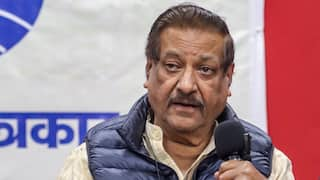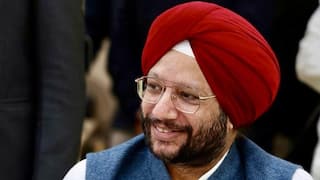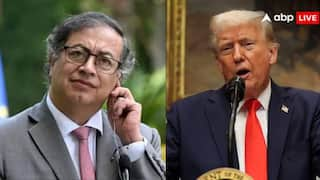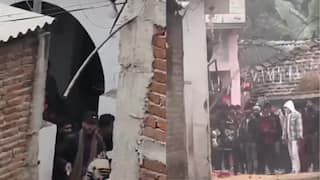Will Tripura Rural Body Polls Become A Farce Again Like It Was In 2019?

The Tripura Election Commission recently announced that the three-tier rural body polls will take place on August 8 and the results will be declared on August 12. There are 606 gram panchayats, 35 panchayat samitis, and 8 zilla parishads. The total number of seats for gram panchayats is 6,370, while panchayat samitis and zilla parishads have 423 and 116 seats, respectively.
In the last rural body polls, the ruling BJP won 85% of the seats uncontested — a figure never seen during the long CPI(M)-led Left Front rule. This was a clear mockery of the state’s democratic system, but the inefficiency of the state election commission allowed it to happen.
Uncontested victories in local polls are not new in the northeastern state — an argument the BJP used to brush aside the unprecedented figure of 85%. In the 2014 rural body polls, the then-ruling Left Front won around 21% of the seats uncontested. It was a period when the Left was at its peak, with Congress crumbling and the BJP, fresh with its 2014 Lok Sabha victory at the Centre, slowly gaining momentum in the state. Still, the figures for uncontested victories in 2014 are very low compared to the huge figure of 85% in 2019.
The Opposition Congress and the Left have alleged that there have been attacks on their workers by the ruling BJP in various places. According to a report in The Tripura Times, published on Friday, CPM candidates had to skip filing nominations at Nalchar due to a lack of security measures.
The state election commission has a big responsibility. It must be strict and ensure that the rural body polls don't become a farce as they did in 2019. The state’s democracy cannot be sacrificed again.
No Left-Congress In Tripura Rural Body Polls
On Thursday, the Left Front organised a large procession, and its nominees filed papers for 15 of the 16 seats in the West Tripura Zilla Parishad. Left candidates also submitted nominations for all 17 Zilla Parishad seats of the South Tripura district. Additionally, the Left submitted nominations for various panchayat samitis and panchayat seats on Thursday.
In the recent Lok Sabha polls, the Left and Congress contested together, with the former fighting from the Tripura East Lok Sabha seat and the latter from the West Lok Sabha seat. However, the Opposition did not perform well, particularly in the East Lok Sabha seat, where the BJP candidate faced internal opposition.
In the rural body polls, both the Left and Congress are not interested in forming an alliance, although they have left the decision to lower-level leaders. The leaders of both parties are aware that at the lower level, there is still animosity. In the state assembly elections held last year, a section of Congress voters did not vote for the Left candidates. This trend changed in the Lok Sabha elections, where many Left voters did not vote for the Congress candidate in the Tripura West Lok Sabha seat. It is worth mentioning that former Chief Minister Manik Sarkar, also a politburo member, was against ceding the Tripura West seat to Congress.
By contesting separately, both the Left and the Congress are trying to test their organisational strength in rural Tripura ahead of the 2028 assembly elections. For the CPM, the main Opposition, these rural body polls are an opportunity to strengthen their poor base in rural areas, which were once dominated by red communist flags. The Left has been in a relatively better position in urban areas, but its hold in rural areas has seen a massive decline. The Congress, banking on its recent increase in strength in the Lok Sabha, is also looking to perform well, particularly in some pockets of the state where it has a presence.
Rahul Gandhi's Visit To Manipur
Leader Of Opposition in Lok Sabha Rahul Gandhi recently visited strife-torn Manipur. This was his third visit to Manipur since the violence broke out in May last year. Notably, this was his first visit to the strife-torn state after becoming the Leader of the Opposition in the Lok Sabha. During his visit, he visited a refugee camp in Jiribam and met with state Governor Anusuya Uikey.
Later, he posted a video on X, stating that the state is still divided, referring to the deep divide between the Meiteis and Kuki-Zomis. He is right. The Centre and the state BJP government are relying on statistics pointing to a reduction in violence, as stated by Prime Minister Narendra Modi in the Rajya Sabha recently. But this reduction in violence won’t remain stable unless the existing bitter gap between the two communities is bridged.
मणिपुर की इस भयंकर त्रासदी में, मैं प्रधानमंत्री जी से अनुरोध करता हूं कि वो यहां आएं, लोगों की बात सुनें और उन्हें सांत्वना दें।
— Rahul Gandhi (@RahulGandhi) July 8, 2024
INDIA जनबंधन ऐसे हर कदम में सहायता करने को तैयार है जिससे स्थिति में सुधार हो सके और शांति बहाल हो सके। pic.twitter.com/rTT4cxSZi0
Rahul Gandhi, by visiting the strife-torn northeastern state, has done his duty as the Leader of Opposition. However, it would have been better if he had also shared his opinion on the strategy needed to restore normalcy in the state. Being an Opposition leader and attacking the BJP for its failure to contain the ethnic violence is acceptable, but he should not forget that this deep animosity traces back to when Congress ruled the state. After all, the demand for Scheduled Tribe status by the Meiteis, one of the prominent reasons behind the violence, is not new — it was raised during the time when Congress ruled both at the state and the Centre. The truth is that Congress then avoided this topic.
The author is a political commentator.
[Disclaimer: The opinions, beliefs, and views expressed by the various authors and forum participants on this website are personal and do not reflect the opinions, beliefs, and views of ABP Network Pvt. Ltd.]


























